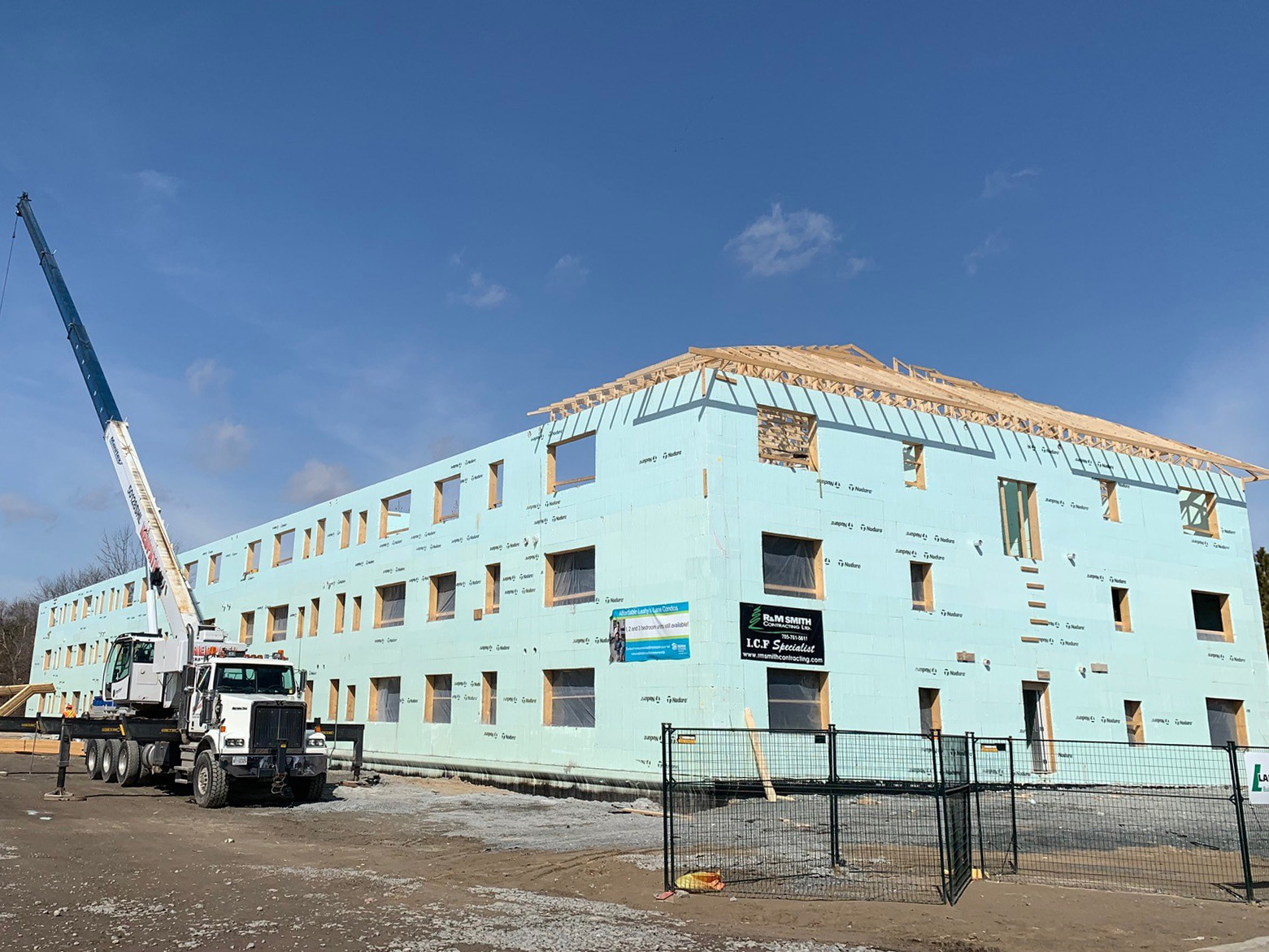
- Products
- Why Nudura
- Nudura Project Applications
- Training Academy
- Resources
- Company
Why Habitat for Humanity Chapters Build with ICFs
Habitat for Humanity is one of the largest organizations building homes for those in need across the globe. Their mission is driven in large part by volunteer labor, who have varied expertise in the construction trades. To address this challenge, Insulated Concrete Forms (ICFs) have been adopted by Habitat for Humanity projects as a faster, easier method for both new and experienced volunteers to build compared to conventional wood framing.
ICF construction has proven itself as one of the most sustainable and durable ways of building residential and commercial structures for decades, but over the last few years, it has been used by Habitat for Humanity locations across the US and Canada to make the energy efficiency and safety benefits more accessible in the affordable housing market. Here's why more Habitat for Humanity chapters should consider using ICFs for their builds.
Easy to Learn and Fast to Assemble

Volunteers are the backbone of Habitat for Humanity’s building efforts, so speed and efficiency are critical to their success. ICF technology consists of hollow foam forms that are stacked, steel-reinforced, and then filled with concrete. The lightweight, collapsible ICF blocks and the simplicity of the process is incredibly user-friendly, allowing volunteers to learn quickly and accelerate the building construction. With ICFs, the walls of a house can often be erected in days rather than weeks, significantly reducing the overall project timeline.
For Amherst County Habitat for Humanity, which operates with small volunteer crews, the exterior wall assembly would typically take them 2-3 months with wood framing. On their first ICF home build in 2024, they accomplished this scope of work in 18 hours. On their second home, after overcoming the initial learning curve, it only took 12 hours.
Energy Efficiency and Comfort
Another standout feature of ICFs is their exceptional energy efficiency. Homes built with ICFs boast impressive thermal performance, which helps maintain consistent indoor temperatures and lower heating and cooling costs. For homeowners who might already be stretched financially, the reduction in utility bills is a substantial benefit. ICFs are also foundational for projects aiming to achieve net-zero energy and net-positive status. Kris McKelvey, Director of Construction at the Hartford Habitat for Humanity, explained, “We want all of our new construction homes to be zero energy ready homes. One of the best ways to reach that is using ICF blocks.”
ICFs are also foundational for projects aiming to achieve net-zero energy and net-positive status. Kris McKelvey, Director of Construction at the Hartford Habitat for Humanity, explained, “We want all of our new construction homes to be zero energy ready homes. One of the best ways to reach that is using ICF blocks.”
The sustainability of ICF construction applies to both single-family homes and multi-family buildings. In Peterborough, Ontario, the local Habitat for Humanity chapter chose Nudura Insulated Concrete Forms to build a 3-story structure with a mix of one, two and three-bedroom apartments. In using ICFs for the walls, each of the 41 units will be more easily and independently controlled for temperature and feature sound-dampening to minimize noise pollution. Together, these attributes will improve overall occupant comfort.
Durability and Safety
Building strength is another noteworthy advantage of using Insulated Concrete Forms. Unlike wood-framing, which can be susceptible to rot, pests and fire, ICFs offer a high level of resilience. The high-density insulation and concrete core provide formidable strength, making the homes more resistant to high winds and impact from storms such as hurricanes and tornadoes.
When these natural disasters strike, lower-income communities are disproportionately affected. By making ICF technology more accessible through Habitat for Humanity, we can better protect these vulnerable families from harsh weather conditions.
In 2018, Amherst County, Virginia unexpectedly experienced an EF-3 tornado, which destroyed 48 homes. 30 of these were uninsured or underinsured. After this, Debbie Babcock Habel, Executive Director for Amherst County Habitat for Humanity, says that transitioning from wood-frame to ICF construction was a no-brainer. “When you see that destruction and know that they've lost everything…there is no way I could learn about this technology and not put it to use for our clientele,” she explained.
In Joplin, Missouri, Army veteran, Charles Timothy Peay, was a recipient of a Habitat for Humanity home constructed with Nudura ICFs. Understanding the proven performance of Insulated Concrete Forms, he has peace of mind about the long-term security of his ICF house in the face of hazardous weather.
Conclusion
Choosing Insulated Concrete Forms provides lasting, sustainable and affordable housing with added ease of construction. ICFs are fast to assemble, making them ideal for volunteer-driven construction. For the homeowners, they offer unparalleled thermal performance, structural integrity and safety.
Successful Habitat for Humanity projects utilizing Nudura ICFs, including both single-family and multi-family structures, highlight the technology's efficiency for all stakeholders, making a strong case for more widespread adoption. “As the saying goes, knowledge is power, and Amherst Habitat chooses to put all of our knowledge into building a safe, resilient, lifetime-affordable home. I can't imagine ever going back to an exterior lumber package!” added Babcock Habel.
If you’re thinking about using ICFs for your Habitat for Humanity build, reach out to a local Sales Rep. Together, we can create homes that are not just places to live, but pillars of strength and sustainability for our communities.
CONTACT US
We’re committed to supporting homeowners and design professionals who are interested in or use our products. We’re always happy to help and provide more information.




